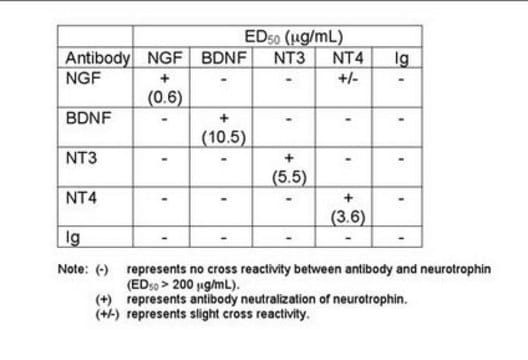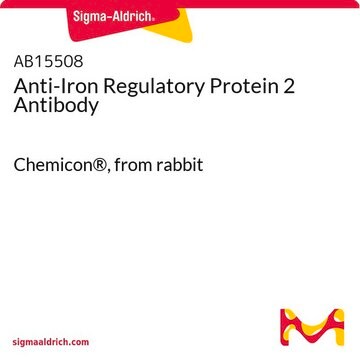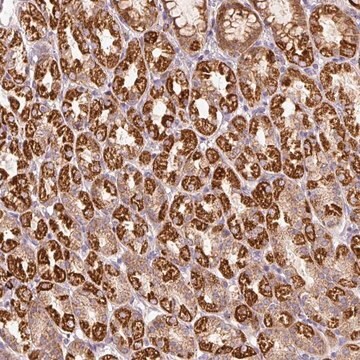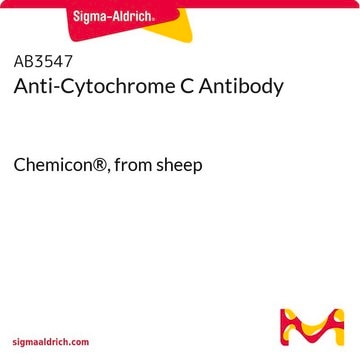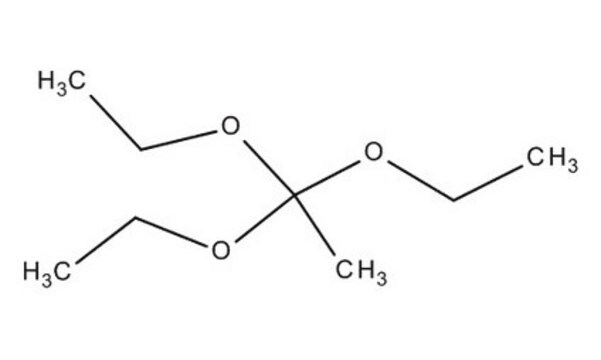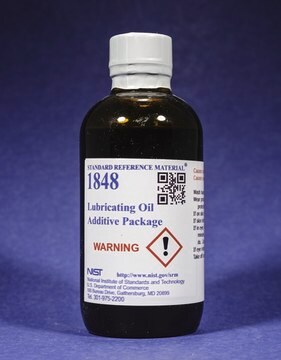AB15506
Anti-Iron Pegulatory Protein 1 Antibody
Chemicon®, from rabbit
Synonym(s):
IRP-1
Sign Into View Organizational & Contract Pricing
All Photos(1)
About This Item
UNSPSC Code:
12352203
eCl@ss:
32160702
NACRES:
NA.41
Recommended Products
biological source
rabbit
Quality Level
antibody form
affinity isolated antibody
antibody product type
primary antibodies
clone
polyclonal
species reactivity
rat
manufacturer/tradename
Chemicon®
technique(s)
ELISA: suitable
western blot: suitable
NCBI accession no.
UniProt accession no.
shipped in
dry ice
target post-translational modification
unmodified
Gene Information
human ... ACO1(48)
General description
Iron regulatory proteins (IRP-1 and IRP-2) are cytoplasmic mRNA-binding proteins that control intracellular iron levels by regulating the translation of ferritin, Tfrs, and other proteins congaing iron-responsive element (IRE) located at the 5′-UTR. IRP binds to IREs with high affinity in situation of iron starvation. Binding of IRP to IRE of ferritin represses its transcription. However, when cells are iron replete, IRPs lose their capacity to bind IREs, allowing efficient translation of ferritin and reducing Tfr mRNA half-life. Although IRP1 and IRP-2 share significant protein sequence homology, they differ in tissue distribution and mode of regulation. IRP-2/IRE-BP2 (rat/human 963 aa) is relatively less abundant than IRP-1 and lacks aconitase activity. It has a unique 73-aa insertion in the N-terminus. In the presence of high iron levels, IRP-2 is rapidly targeted to proteasome-mediated degradation. Although, both IRPs bind the consensus IREs, it is also shown that IRP-2 can recognize an exclusive IRE subset.
Specificity
Iron regulatory protein 1 (IRP-1). The immunogen sequence has no significant homology with IRP-2.
Other species have not yet been tested. The immunogen sequence is 94% conserved in mouse, and 89% in human and rabbit IRP-1.
Immunogen
Synthetic peptide near the N-terminus of rat IRP-1.
Application
Anti-Iron Pegulatory Protein 1 Antibody detects level of Iron Pegulatory Protein 1 & has been published & validated for use in ELISA & WB.
Research Category
Neuroscience
Neuroscience
Research Sub Category
Neurodegenerative Diseases
Neurofilament & Neuron Metabolism
RNA Binding Protein (RBP)
Neurodegenerative Diseases
Neurofilament & Neuron Metabolism
RNA Binding Protein (RBP)
Western blot: 1-10 µg/mL using ECL.
Immunohistochemistry: Not tested. Recommended testing antibody dilution:2-20 µg/mL
ELISA: 1:10,000-1:100,000 using 50-100 ng of control peptide/well.
Optimal working dilutions must be determined by end user.
Immunohistochemistry: Not tested. Recommended testing antibody dilution:2-20 µg/mL
ELISA: 1:10,000-1:100,000 using 50-100 ng of control peptide/well.
Optimal working dilutions must be determined by end user.
Physical form
Format: Purified
ImmunoAffinity Purified
Liquid in PBS with 0.1% BSA.
Storage and Stability
Maintain at -20°C in undiluted aliquots for up to 6 months after date of receipt. Avoid repeated freeze/thaw cycles.
Legal Information
CHEMICON is a registered trademark of Merck KGaA, Darmstadt, Germany
Disclaimer
Unless otherwise stated in our catalog or other company documentation accompanying the product(s), our products are intended for research use only and are not to be used for any other purpose, which includes but is not limited to, unauthorized commercial uses, in vitro diagnostic uses, ex vivo or in vivo therapeutic uses or any type of consumption or application to humans or animals.
Not finding the right product?
Try our Product Selector Tool.
Storage Class Code
10 - Combustible liquids
WGK
WGK 2
Flash Point(F)
Not applicable
Flash Point(C)
Not applicable
Certificates of Analysis (COA)
Search for Certificates of Analysis (COA) by entering the products Lot/Batch Number. Lot and Batch Numbers can be found on a product’s label following the words ‘Lot’ or ‘Batch’.
Already Own This Product?
Find documentation for the products that you have recently purchased in the Document Library.
? -Actinin TvACTN3 of Trichomonas vaginalis is an RNA-binding protein that could participate in its posttranscriptional iron regulatory mechanism.
Calla-Choque, JS; Figueroa-Angulo, EE; Avila-Gonzalez, L; Arroyo, R
BioMed Research International null
Our team of scientists has experience in all areas of research including Life Science, Material Science, Chemical Synthesis, Chromatography, Analytical and many others.
Contact Technical Service